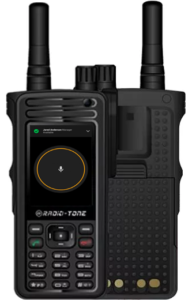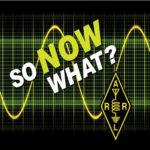One of the responsibilities of the Technical Coordinator in the Ohio Section is to submit something for the Section Journal. The Section Journal covers Amateur Radio related things happening in and around the ARRL Ohio Section. It is published by the Section Manager Scott – N8SY and articles are submitted by cabinet members.
Once my article is published in the Journal, I will also make it available on my site with a link to the published edition.
You can receive the Journal and other Ohio Section news by joining the mailing list Scott has setup. You do not need to be a member of the ARRL, Ohio Section, or even a ham to join the mailing list. Please sign up!
If you are an ARRL member and reside in the Ohio Section, update your mailing preferences to receive Ohio Section news in your inbox. Those residing outside the section will need to use the mailing list link above.
Updating your ARRL profile will deliver news from the section where you reside (if the leadership chooses to use this method).
Go to www.arrl.org and logon.
Click Edit your Profile.
You will be taken to the Edit Your Profile page. On the first tab Edit Info, verify your Email address is correct.
Click the Edit Email Subscriptions tab.
Check the News and information from your Division Director and Section Manager box.
Click Save.
Now without further ado…
Read the full edition at:
THE TECHNICAL COORDINATOR
Jeff Kopcak – TC
k8jtk@arrl.net
Do you have your Network Radio? I do, well, maybe. Not the way most people define Network Radios. In the last number of years, outside Voice over IP (VoIP) services have found their way into ham radio. Services utilize mobile data connections like 3G, 4G, and WiFi to connect users over the Internet. The app turns a cell phone or tablet into a HT-like device, complete with PTT button. “Network Radios” has been used to define these types of transceiver and channels available on those transceivers.
 Probably 4-5 years ago, and still used today, a number of hams were all abuzz about this service called Zello. Another service called IRN (International Radio Network) is built on TeamSpeak. TeamSpeak is most frequently used as an audio chat service for players in multiplayer video games. Both of these services were probably adopted by ham-radio operators because of the similarities. Use a speaker, microphone, and can carry on round-table style chats. One person talks and the rest receive. These are called “channels” – similar in ham lingo to a reflector, conference, or talk group.
Probably 4-5 years ago, and still used today, a number of hams were all abuzz about this service called Zello. Another service called IRN (International Radio Network) is built on TeamSpeak. TeamSpeak is most frequently used as an audio chat service for players in multiplayer video games. Both of these services were probably adopted by ham-radio operators because of the similarities. Use a speaker, microphone, and can carry on round-table style chats. One person talks and the rest receive. These are called “channels” – similar in ham lingo to a reflector, conference, or talk group.
The term “Network Radios” is making the rounds because devices are being sold that integrate with VoIP services and are made to look like an HT or mobile radio. Most run the Android operating system meaning they come with the Google Play store. Having the Play store means any app can be installed, such as other VoIP apps like the EchoLink app or Repeater Book repeater directory.
RFinder was the first to design and sell Network Radios. They took a cellphone and attached a dual-band VHF/UHF transmitter capable of analog or DMR. Make phone calls or phone-calls. A similar tablet version is also available. Their devices are integrated with and promote the RFinder application (digital version of the ARRL repeater directory). Running the application and using the GPS makes it easy to locate near-by repeaters. Clicking a repeater would program the radio for use with the selected repeater, including offsets and sub-audible tones. Press PTT and you’re on the air!
A store with the completely original name, Network-Radios, is selling a whole range of Network Radios including the RFinder devices. The HT  Network Radios have, what looks like, an antenna but few lists the capability of transmitting in the ham bands. None of the mobile Network Radios have any kind of RF connector.
Network Radios have, what looks like, an antenna but few lists the capability of transmitting in the ham bands. None of the mobile Network Radios have any kind of RF connector.
This brings up the question: is this ham radio? My definition: if a legal identification is required, it is ham radio. More-or-less, I’m looking for Internet-linked endpoints to be connected to some kind of RF transmitting device in the ham bands that follows Part 97. I would like to have all linked end points transmitting in the ham bands, but I’ll take what I can get. My reasoning: our bands continue to be under attack by commercial entities that would pay big money for our frequencies and EVERYONE always complains our repeaters and frequencies are underutilized. Actually using our bands shows whoever is out there listening (FCC, commercial interests, people scanning the bands, potential hams, …) that ham frequencies are being utilized and we’re doing stuff with our bands. Call me crazy!
I’m not opposed to hams using these Network Radio services to find a better tool. Some Network Radio channels are even linked to repeater systems. That’s OK if private channels are properly controlled, seems like a lot of extra management. However, the overarching use of these services is mobile-device to mobile-device using non-ham bands. That is not at all ham radio. One argument is that some people need a place to let loose a little more than would be allowed on a regular repeater. Whatever.
I heard, from hams, in recent Emcomm situations how great it was that Zello was being used by the public to phone in needed rescues. Other channels were created for family members looking for relatives to make sure they were OK. Great use of technology. If average people can be mobilized at a moment’s notice with boats and rescue gear through a phone app, are hams still relevant? Anyone else see the irony?
The argument is always made: “the cell network can, and will, go down.” The exact opposite argument is being made promoting Network Radios as seen at the beginning of this blog post (some  language NSFW, that is “not safe for work”) on the Network-Radios site: “I get 99,99999% of cell signal no matter where I am. I wonder if you can reach a VHF or UHF repeater for 10% of the time of your travelling with a typical 4 Watt handheld with its rubber duck antenna. And if GSM is not available, I could use a global wifi hotspot.” We’re doomed. Too soon?
language NSFW, that is “not safe for work”) on the Network-Radios site: “I get 99,99999% of cell signal no matter where I am. I wonder if you can reach a VHF or UHF repeater for 10% of the time of your travelling with a typical 4 Watt handheld with its rubber duck antenna. And if GSM is not available, I could use a global wifi hotspot.” We’re doomed. Too soon?
New Podcast
 The ARRL is sponsoring a new podcast that launched March 7. “So Now What?” is geared toward those who have obtained their license and need mentoring on the next steps to get the most out of the hobby. “Topics to be discussed in the first several episodes include getting started, operating modes available to Technician licensees, VEC and licensing issues, sunspots and propagation, mobile operating, contesting, Amateur Radio in pop culture, and perceptions of Technician license holders.” I’m sure there will be ideas for new and old hams alike. Subscribe to this new podcast and get the most out of ham radio!
The ARRL is sponsoring a new podcast that launched March 7. “So Now What?” is geared toward those who have obtained their license and need mentoring on the next steps to get the most out of the hobby. “Topics to be discussed in the first several episodes include getting started, operating modes available to Technician licensees, VEC and licensing issues, sunspots and propagation, mobile operating, contesting, Amateur Radio in pop culture, and perceptions of Technician license holders.” I’m sure there will be ideas for new and old hams alike. Subscribe to this new podcast and get the most out of ham radio!
Networking Basics
 I made a career move over a year ago from programming into a networking position and quite enjoy it. Pascal – VA2PV, has a quality Youtube channel where he frequently does product reviews, how-to videos, and shares his experiences with things like PL-259 installation and re-cabling his shack. Video and audio quality are excellent with many videos available in 4K (great opportunity to experience a 4K stream). He released a video on the basics of IP networking. It won’t go in depth to the level of things I do at work, but if you ever wanted to know how devices on your home network can communicate with devices on the Internet, what is DHCP & DNS, then his video is required viewing.
I made a career move over a year ago from programming into a networking position and quite enjoy it. Pascal – VA2PV, has a quality Youtube channel where he frequently does product reviews, how-to videos, and shares his experiences with things like PL-259 installation and re-cabling his shack. Video and audio quality are excellent with many videos available in 4K (great opportunity to experience a 4K stream). He released a video on the basics of IP networking. It won’t go in depth to the level of things I do at work, but if you ever wanted to know how devices on your home network can communicate with devices on the Internet, what is DHCP & DNS, then his video is required viewing.
FreeDV QSO Party
A group in Australia has announced the first ever FreeDV QSO party starting on April 27th 0300z to April 28th 0300z 2019. FreeDV is an open source digital voice mode, commonly referred to as Codec 2. I’ve played around with this mode before and was impressed by the resulting audio quality in such a narrow bandwidth. I hope this will create some FreeDV activity on the bands. It does require two sound cards (or sound devices) to operate. If you have an internal soundcard and a SignaLink, you’re set. The internal soundcard records and plays voice audio while the SignaLink (or other) transmits and receives digital modulation to and from your radio. Look for you on the bands using FreeDV!
Thanks for reading and 73… de Jeff – K8JTK
